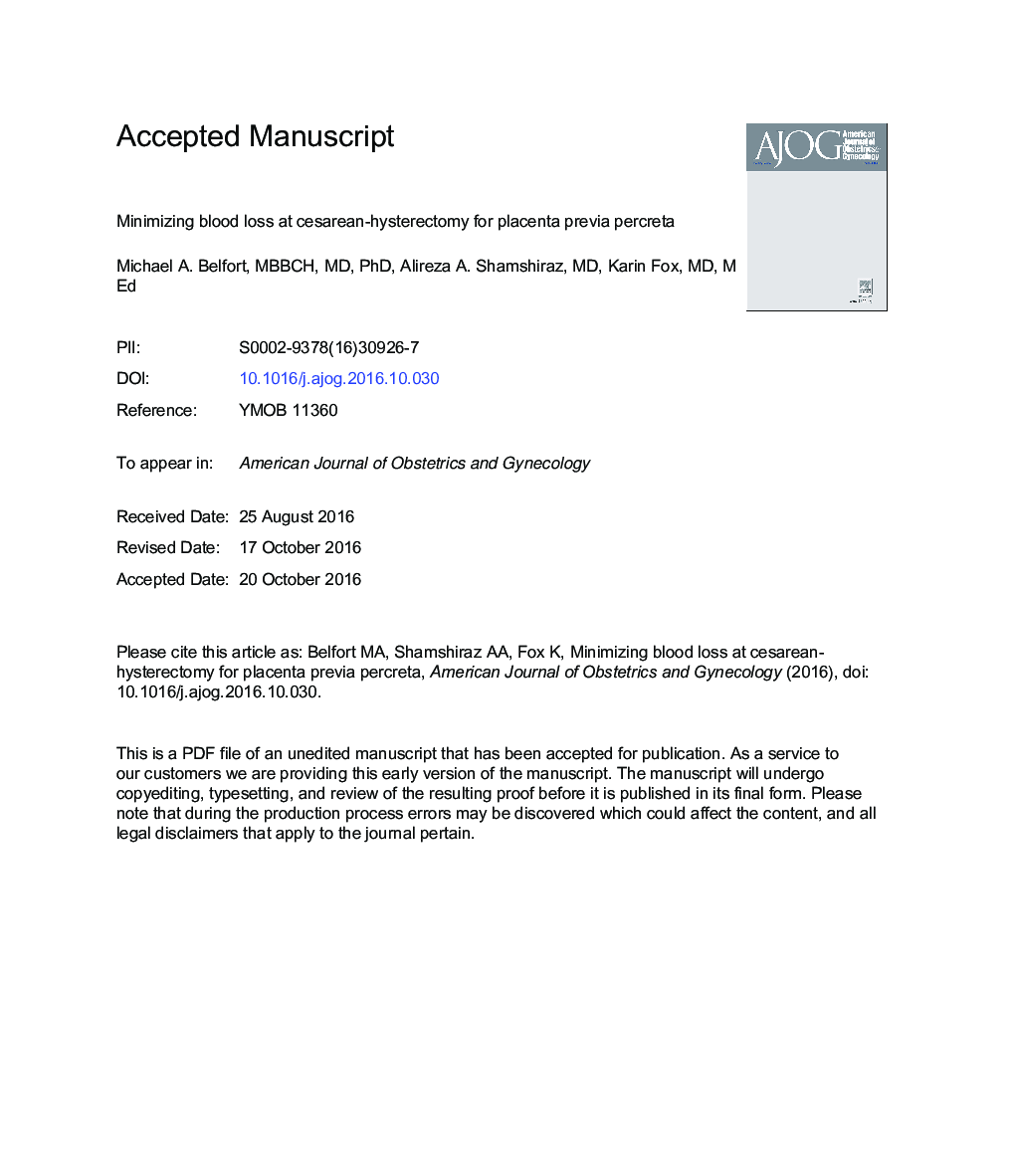| Article ID | Journal | Published Year | Pages | File Type |
|---|---|---|---|---|
| 5676362 | American Journal of Obstetrics and Gynecology | 2017 | 14 Pages |
Abstract
Preventing blood loss at the time of a cesarean delivery during a scheduled, nonemergent cesarean hysterectomy for placenta percreta may reduce the need for crystalloid and blood product transfusion. Commonly a classical hysterotomy is created and this can result in as much as a 500-800 mL blood loss before the hysterotomy is closed. Our technique involves placement of 4 full-thickness interrupted sutures in a box pattern to create an unperfused area of upper uterine segment. Diathermy is used to open the uterus to the membranes in the center of the “box” without blood loss. A finger is then inserted between the membranes and uterus to create a space into which 1 side of an 80-mm linear cutting stapler is introduced. The other side of the stapler is then attached and clamped closed, and the stapler is activated. Forward motion of the lever lays down 2 rows of staples, and backward movement of the lever divides the uterine muscle between the 2 staple lines. The stapler is removed and reloaded and reintroduced 1 or 2 times as needed to create an avascular hysterotomy large enough to atraumatically deliver the baby. The membranes are then opened and the baby is delivered. Following this the umbilical cord is clamped and cut without any attempt to remove the placenta, replaced in the uterine cavity, and the hysterotomy is closed with a running locked suture that incorporates the membrane edges. The hysterectomy then proceeds. In most cases there is minimal blood loss (usually <20Â mL) from the cesarean delivery.
Related Topics
Health Sciences
Medicine and Dentistry
Medicine and Dentistry (General)
Authors
Michael A. MBBCH, MD, PhD, Alireza A. MD, Karin MD, MEd,
